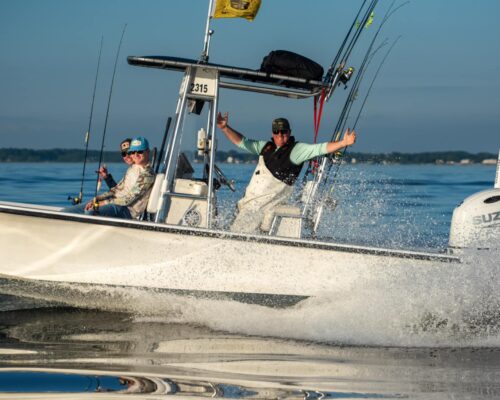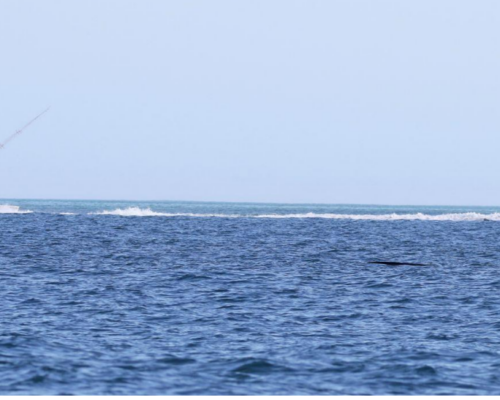Gunning the Susquehanna Flats
By Capt. Chris D. Dollar
I’m glad I don’t have to, but if forced to choose one duck over another, then I suppose I’d pick the canvasback. Definitely in the mix are scaups (usually called bluebills or blackheads by duck hunters), as are pintails. But of the wild fowl I’ve witnessed do their thing, no duck compares to the canvasback’s combination of power and grace. Cans can dive-bomb to the water from dizzying heights and pierce a 25-knot headwind without flinching. Once on the water, they’re as content as a cat on a quilt, even when the Bay is at its roughest. Canvasbacks are powerful swimmers, but like other diving ducks, they are clumsy on land because their legs are located far back on the body.
Historically, nearly half of North America’s canvasbacks, the largest diving duck species, used to winter in the Chesapeake Bay region, according to the Chesapeake Bay Program.
The figure has since declined to about 20 percent due to a decline in bay grasses, their preferred food. Part of the canvasback’s scientific name, valisineria, derives from the scientific name of the underwater grass called wild celery, Vallisneria americana. However, canvasback populations appear to be slowly recovering due to better protection measures.
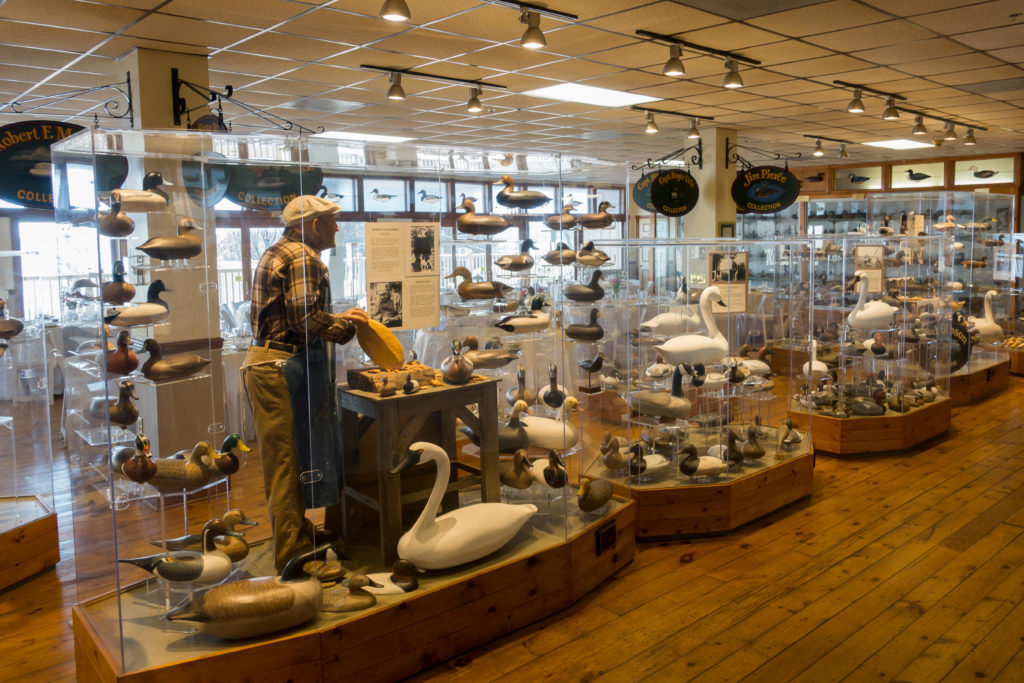
During the halcyon days of Chesapeake gunning, beginning in the latter part of 19th century, untold numbers of waterfowl lured sportsmen from all over to the country to the Bay’s hallowed hunting grounds. The Susquehanna Flats ranked high on that list for hunters who pursued canvasback and other waterfowl.
The influx of hunters helped support many people, particularly the families in and around Havre de Grace, Md. Back then, it was legal to sell game birds, a favorite for the well-heeled clientele who frequented Baltimore and Philadelphia restaurants, as well as ones in Midwest cities such as Chicago. Locals developed tools, tactics, and techniques for both market and sport hunting. Many legendary decoy carvers hailed from the waterfront town of Havre de Grace, and the town earned the nickname, “Decoy Capital of the World.” It is internationally famous for its decoy carvers, who originally made utilitarian dekes for the sole purpose of fooling waterfowl within range of the sport gunner’s shotgun or the market gunners’ punt gun. The Havre de Grace Decoy Museum showcases the best of the best carvers, from present-day craftsmen and women to legendary masters from a bygone era. In modern times, many more people buy carved decoys as works of art to be admired and displayed rather than as a working decoy that floats among a hunter’s rig.
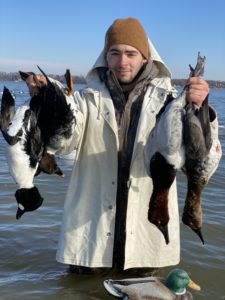
Today’s waterfowl hunters and some outfitters continue the on-water traditions that have their roots planted in the Susquehanna Flats. One such tactic is called body booting, a traditional style of waterfowl hunting developed in Maryland in the 1950s that remains popular in the upper Bay. Gunners stand in the shallow waters of the Susquehanna Flats and conceal themselves among a spread of decoys, v-boards, and “stick ups”—the latter being a ridiculously oversized decoy silhouette that you hide behind.
One of the younger practitioners of this style of gunning is Captain Ryan Popp, who owns and operates Upper Chesapeake Outfitters. He’s intent on keeping this legacy going. I’m friends with his father, Jeff, who runs Vista Lady Charters, and I first met Captain Ryan many years ago when he was still in high school. If I recall correctly, he didn’t yet hold a driver’s license, yet he had a decoy trail stuffed with various fake ducks and geese.
From an early age, he knew he wanted to make a career out of his passion for hunting and fishing. I’ve hunted with Ryan when we were treated to a great mallard hunt on a picture-postcard snowy day and we’ve done at least two successful goose hunts on pastoral farmland in Harford County. Today, as a professional charter captain and outfitter, he gets real enjoyment from sharing his love of the outdoors with others who like to hunt waterfowl and catch fish.
Although Popp and his guides follow the birds to offer their clients the best chance at a successful hunt, hunting ducks and Canada geese on the Susquehanna Flats holds a very special place for him. Typically, they’ll launch the boat from Havre de Grace, which allows for a conveniently short boat ride to the hunting grounds on the Flats.
“As the sun rises, the Flats begins to come alive with birds moving, and the excitement begins to build,” the younger Popp says. “The birds will begin their morning flights to feed and land into the spread of decoys and hunters awaiting them. As the birds enter the spread, the shot is called and you will rise from your crouched position behind the stick-up and take aim at your trophy. It is typical to have many shots (at birds) within 10–15 yards of your position. This hunt provides a truly unique experience that was made famous on the Chesapeake Bay. Few hunts rival the thrills of body booting on the Flats, where it all began.”
Waterfowlers are a peculiar breed. It seems the nastier the weather, the more they crave being out in it. No doubt, snotty weather can be instrumental for to a successful waterfowl hunt, so when the weather turns snotty, duck hunters can become monomaniacal in their quest for the perfect toll.
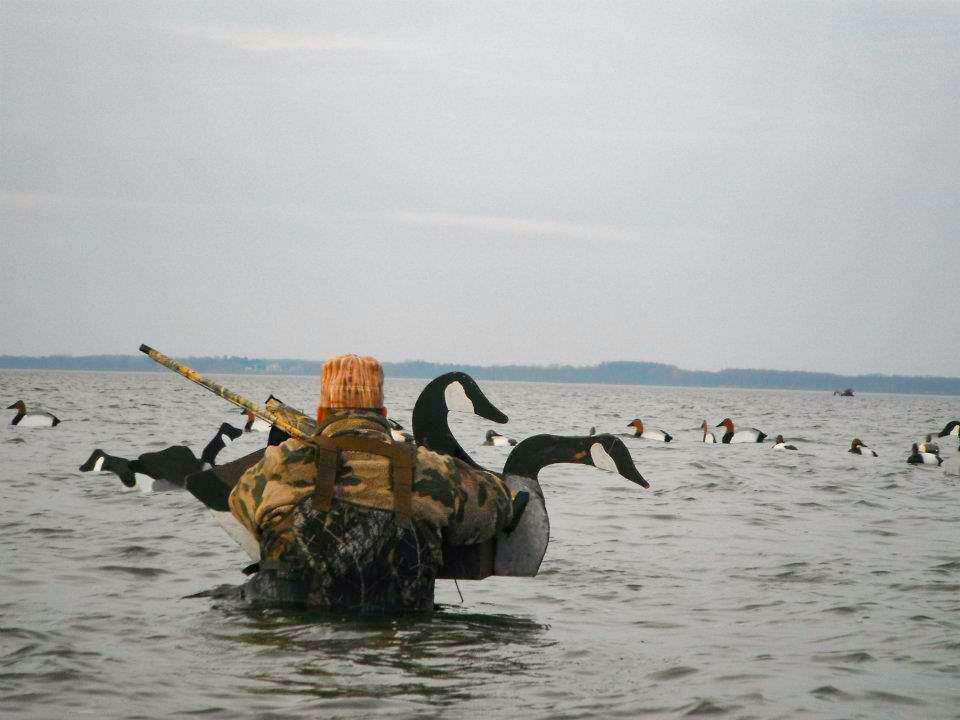
That said, I’ve never tried body booting, perhaps the only kind of Chesapeake waterfowl hunting I haven’t experienced. I don’t have a plausible explanation as to why, except maybe time constraints. And that’s a weak excuse at best. Whatever the reason, it’s a big hole in my gunning resume that needs to be filled. I’m hoping to persuade the Popps to let me tag along this winter.


